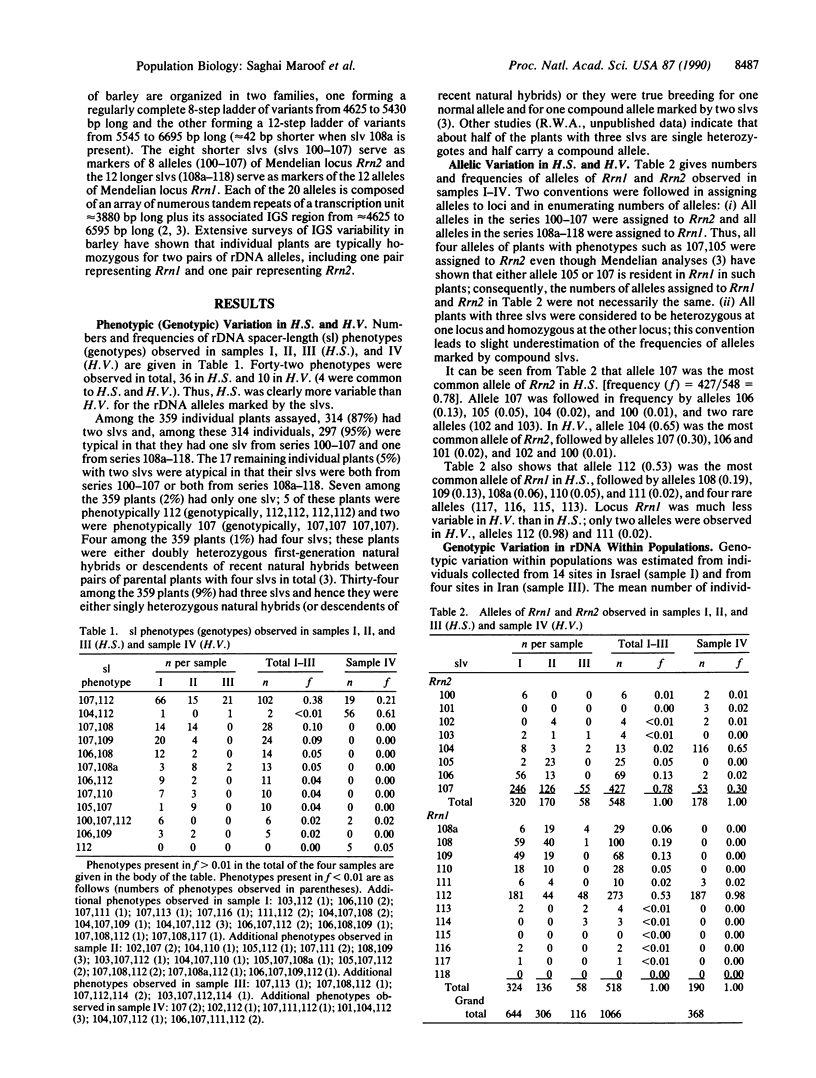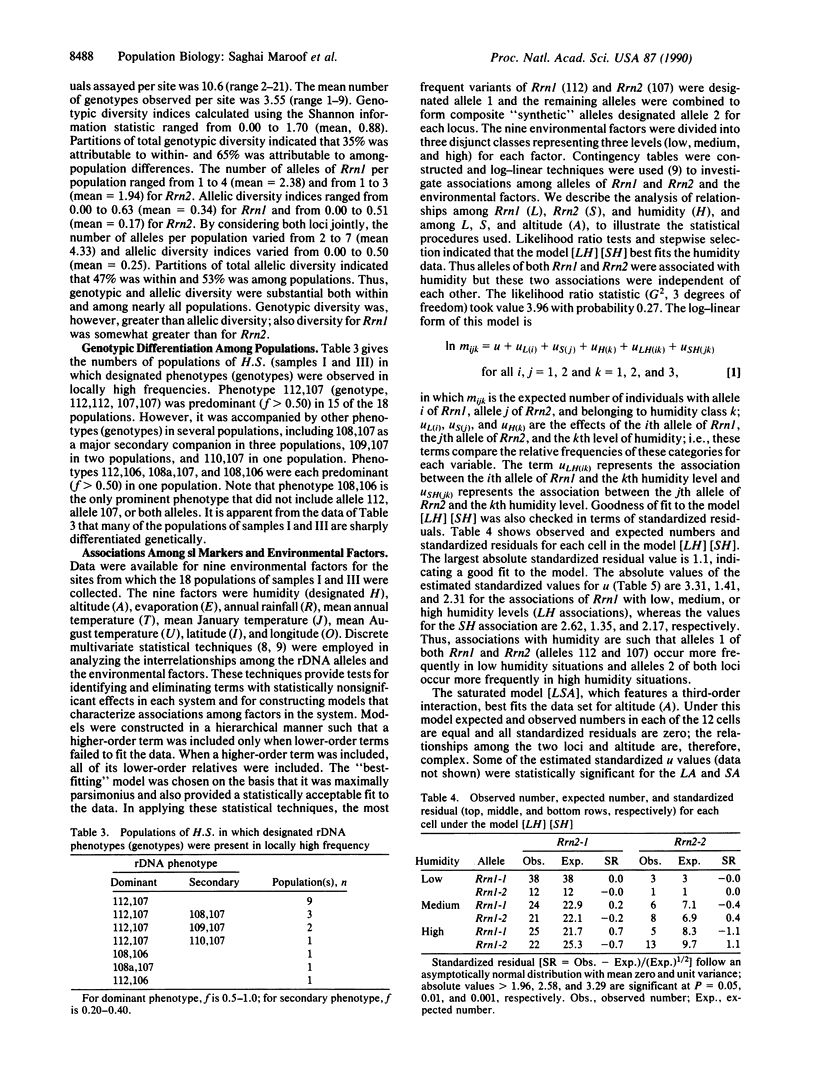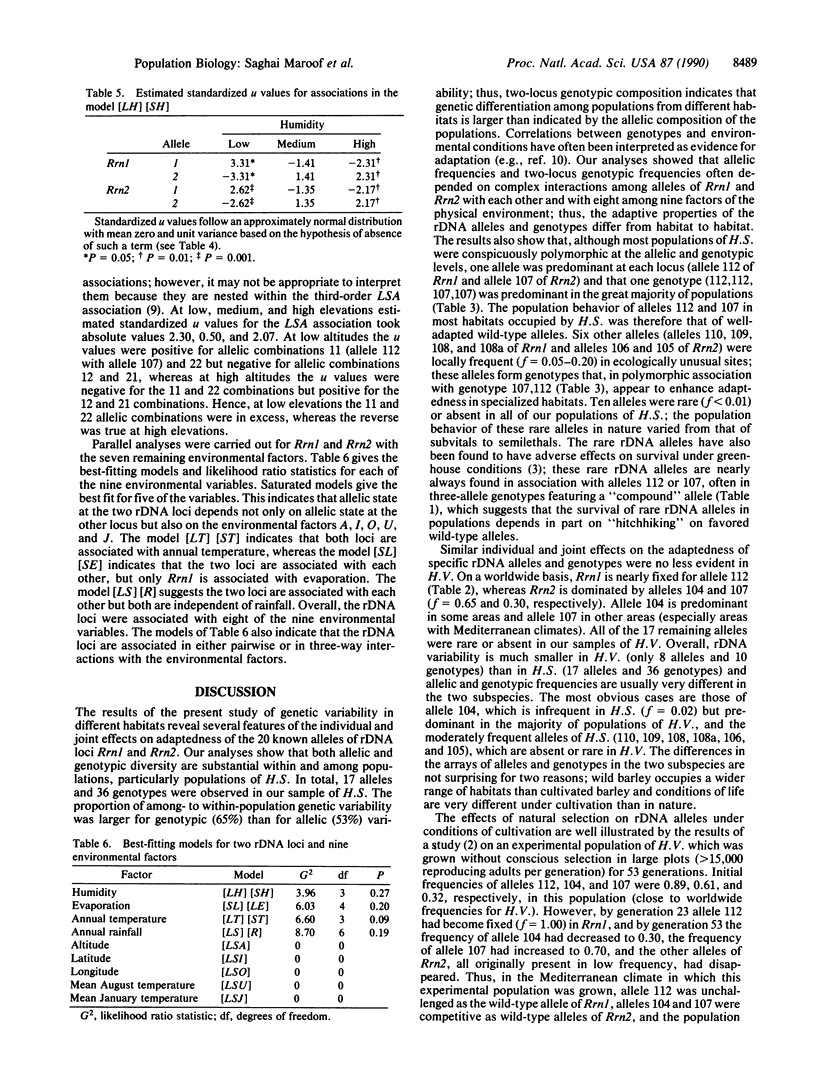Abstract
DNA from 267 accessions of wild barley from ecologically diverse habitats in Israel and Iran and from 92 accessions of cultivated barley from throughout the world were assayed for the 20 ribosomal DNA (rDNA) spacer-length variants that have been identified in the barley species. These 20 spacer-length variants, which are detectable by Southern blot hybridization, serve as markers of rDNA alleles of two Mendelian loci, Rrn1 and Rrn2. All of the populations of wild barley studied were polymorphic for both loci. In wild barley allele 112 (Rrn1) and allele 107 (Rrn2) behaved as widely adapted wild-type alleles; in our sample of cultivated barley allele 112 also behaved as a wild-type allele but allele 104 was somewhat more frequent than allele 107 in Rrn2. A few other alleles were locally frequent in wild barley. However, most of the 20 alleles were infrequent or rare and such alleles were often associated as "hitchhikers" with one of the wild-type alleles in compound two-component alleles. Allelic and genotypic frequencies differed widely in different habitats in correlation with eight of nine factors of the physical environment. Discrete log-linear multivariate analyses revealed statistically significant associations among alleles of Rrn1 and Rrn2. It was concluded that natural selection acting differentially on various rDNA alleles plays a major role in the development and maintenance of observed patterns of molecular and genetic organization of rDNA variability.
Full text
PDF




Selected References
These references are in PubMed. This may not be the complete list of references from this article.
- Allard R. W. The Wilhelmine E. Key 1987 invitational lecture. Genetic changes associated with the evolution of adaptedness in cultivated plants and their wild progenitors. J Hered. 1988 Jul-Aug;79(4):225–238. doi: 10.1093/oxfordjournals.jhered.a110503. [DOI] [PubMed] [Google Scholar]
- Gerlach W. L., Bedbrook J. R. Cloning and characterization of ribosomal RNA genes from wheat and barley. Nucleic Acids Res. 1979 Dec 11;7(7):1869–1885. doi: 10.1093/nar/7.7.1869. [DOI] [PMC free article] [PubMed] [Google Scholar]
- Neale D. B., Saghai-Maroof M. A., Allard R. W., Zhang Q., Jorgensen R. A. Chloroplast DNA diversity in populations of wild and cultivated barley. Genetics. 1988 Dec;120(4):1105–1110. doi: 10.1093/genetics/120.4.1105. [DOI] [PMC free article] [PubMed] [Google Scholar]
- Saghai-Maroof M. A., Soliman K. M., Jorgensen R. A., Allard R. W. Ribosomal DNA spacer-length polymorphisms in barley: mendelian inheritance, chromosomal location, and population dynamics. Proc Natl Acad Sci U S A. 1984 Dec;81(24):8014–8018. doi: 10.1073/pnas.81.24.8014. [DOI] [PMC free article] [PubMed] [Google Scholar]


